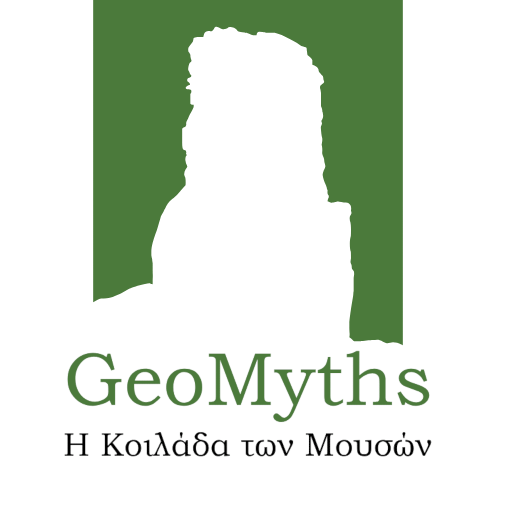Valley of the Muses
Welcome to the area of ancient Ascra, which lies at the foot of the spring-rich Mount Helicon. Here, according to the poem Atthis of Hegesinus, the nymph of Helicon, Ascra, slept with earth-shattering Poseidon and from this contact gave birth to Oeoclus, who, together with his sons Aloeus, Ephialtes and Otus, were the first settlers of Ascra. They were the first to sacrifice to Helicon for the Muses and named the mountain “the sanctuary of the Muses” and the city of Ascra in honour of Oeoclus' mother.
The Valley of the Muses opens up before you and get ready to tour one of the most attractive and evocative areas of Greece.
The history of this place is sealed by the name and work of Hesiod, the shepherd who transformed himself into a poet with the help of the Muses. It was here on one of these slopes that one of the greatest miracles of Western civilisation took place. A simple, humble man was initiated into the mysteries of the world and succeeded in composing a story that presents the appearance and action of the immortal gods and their relationship to mere mortals. We are therefore in a place that can be considered a cradle of creative inspiration. Walking along its paths or gazing at the mountain peaks, the visitor cannot help but feel lighter, free from the burdens of monotony with which city life burdens him.
Look at the colourful scene spread out before you.
To the west is the peak at 1401 meters of Mount Helicon. There is the altar of Zeus and 150 metres to the right of it is the famous Hippocrene spring, whose water gushed out in a rush when it was struck by the powerful horseshoe of the winged horse Pegasus, son of the irresistible Medusa. Near this spring, according to Hesiod, the light-hearted Muses were dancing and building the sanctuary of Zeus. On the left, the inverted triangle is the terrace, where the path for ascending to the top is located. The inscriptionist Onestus, known from the inscriptions on the pedestals of the statues of the Muses, said: Climbing up Mount Helicon makes you very tired, but you are satiated with the fresh water of Pegasus' fountain. So also the road of wisdom is uphill; but if you reach the edge of the peak, you will taste the graces of the Muses of Pieria.
Further to the left the elongated part of the summit is called Maradali. In the background behind Ascra looms Mount Kithairon. According to mythology, Helicon and Kithairon were brothers, with opposite characters. The former was kind and attentive to his parents, while the latter was fierce, barbaric and covetous. Greed led Kithairon to kill his father and then fraudulently throw his brother Helicon off a cliff. But in his momentum he himself was swept away and reduced to rubble. The gods transformed the two brothers into their respective mountains. Kithairon, however, became the dwelling place of the Erinyes, while Helicon became the home of the Muses.
The hill in front of us, where the medieval tower can be seen, is Paliovoros.
Apparently the word comes from “voros” which means vulture. The area used to be full of vultures. The study of the tower was carried out by Dr P. Lock. It was thought to be medieval, although some unique features in its architecture, for example a built-in fireplace, symbolise a very likely Turkish structure.
The finds (mainly pottery sherds) suggest that the monument dates to the Paleologian period, while a few clues tell us that it may have been inhabited in antiquity. The tower with dimensions of 8,70 x 5,3 and a height of 7 metres was built with stones and lime mortar and founded directly on the natural rock. It had the ground floor and two floors and the entrance was on the first floor, almost 2 meters higher than the ground surface, where they climbed up with a wind ladder. During the Frankish rule it was the residence of a mayor, a Frankish feudal lord.
The conical hill with the classical tower is Pyrgaki, the ancient Kerissos, where the acropolis of ancient Ascra was located. Apart from the tower there are also ruins of a fortified enclosure. Pyrgaki was used for military purposes on at least two occasions: In the battle of Kerissos, the oldest and most prominent victory that kept Central Greece free, and during the Lacedaemonian campaign against Thebes that had an inglorious end at Lefktra in 371 BC. In particular, from the accounts of Plutarch and Pausanias, the Boeotians and the Thespians settled defensively at Kerissos to confront the Thessalians and Thebans respectively. Both battles took place in the month of Hippodrome (Hecatombeion for the Athenians) which corresponded to the period from 17 July to 15 August.
Moving towards the foot of Mount Helicon we will reach the ancient theatre and a little lower the sanctuary of the Muses.
The flat area with the large tree on the left is Kokkalas, probably from the many bones found, even in the 60's, after deep ploughing for planting vines. This must have been the site of the battle of Kerissos between the Boeotians and Thessalians, during which the latter were defeated and their battalion leader Lattamias was killed.
In this green valley with its gentle changes in the flora and the charming folds of the ground, the inhabitants became more sensitive and philanthropic, so that they often philosophise and formulate rules of life, as Menander characteristically writes: "If some were to inhabit Ascra, they would have to take this very fact as a eulogy, that it is necessary for the inhabitants to philosophize and be steadfast". In this blessed place, the Valley of the Muses, the inhabitants of Ascra lived throughout the ages, cultivating ‘wheat, wine and oil’, according to the ecclesiastical saying.








 Your session has timed out for security reasons.
Your session has timed out for security reasons.